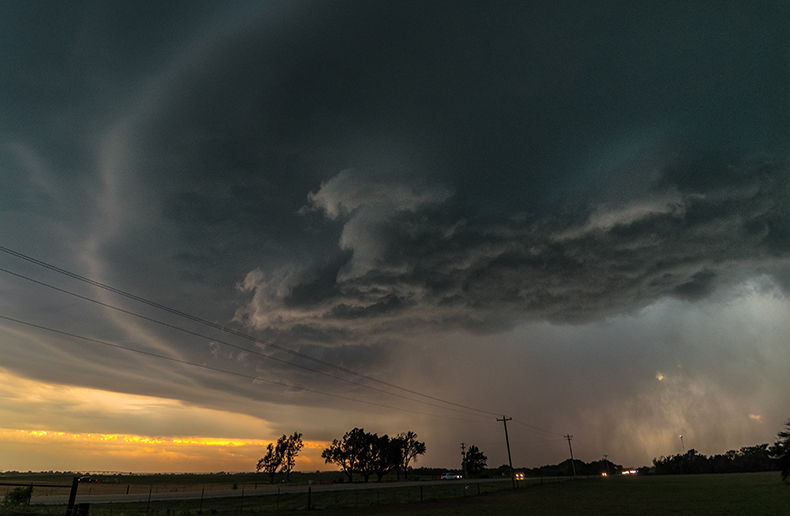Canadian retirees need more advice and products tailored to a growing trend: the de-accumulation of several hundred billion dollars in assets, parked in various forms of retirement savings.
In August, LIMRA took the pulse of this aging segment, pinpointing business opportunities for advisors. The 2010 Retirement Income and Spending in Canada sums up the research organization’s survey of people ages 55 to 75 who retired one to eight years ago, and who have at least $100,000 to invest. The main finding: retirees need assistance from their financial advisors.
Three-quarters of retirees that have an advisor told LIMRA that they received advice on how to preserve their assets throughout their life. They also mentioned that they should have searched elsewhere for more advice on this subject (53%). One out of four retirees does not know whether they will have enough money to generate income for the rest of their life.
In addition, 51% of retirees that received advice would have liked to know more about how to choose the investment products that yield their retirement income. Although eight retirees out of ten say they have a plan to manage income and expenses at retirement, the majority of these plans are informal. This opens the door for advisors to give Canadians’ intentions concrete form. It is time for professionals to become more active, LIMRA suggests.
Doing so promises a sizable reward: selling one or more products. For example, 46% of retirees dealing with an advisor would have liked to ask for more advice about income products in which to convert their RRSP. In fact, 56% of respondents had not converted their RRSPs at the time of the survey, conducted from March to August 2010.
The study also highlighted this population’s need for insurance products designed to protect wealth during the transfer to heirs or in case of health problems.
“Survey participants…could have used more help because of blended factors [such] as economic uncertainty and market downturn. Also, income decreased for 41% of retirees and their expenses increased for 36% of them. In addition to that, 30% of the retirees don’t know if they will have enough assets to last their lifetime,” explains Sally Bryck, Associate Research Director, LIMRA Retirement Research.
Ms. Bryck concludes that this is a choice niche for advisors. She recommends that they contact their older clients to review their portfolio and assess whether these people need help. This niche is especially promising because it is growing.
Statistics Canada counted nearly 4.5 million Canadians age 65 or over in 2007. This group will expand steadily in the coming years because in 2007, nearly 9 million Canadians were aged between 45 and 64. Canadians over age 45 thus represent nearly 41% of the total population of 33 million. Clearly, the grey tide will swell.
Continuous planning
In her 20 years as a specialist in this business segment, Hélène Gagné has seen this wave building. A published author on retirement planning and an associate portfolio manager at PWL Capital, Ms. Gagné realized early on that this clientele segment would need ongoing advice much more frequently than during their time in the workforce.
“I’m not surprised at the LIMRA results. Volatility is a friend of investors in the accumulation phase but an enemy of those in the de-accumulation phase,” she says. An especially formidable enemy because retirement now lasts longer than ever, sometimes 30 or 35 years, she points out.
In a period of volatility, minimum withdrawals that investors must make from registered retirement income funds (RRIF) have a double negative effect when they coincide with a period of volatility, Ms. Gagné explains. First, you are withdrawing from investments that sustained losses, and when the markets rebound these investments are no longer around to grow. “These two factors may considerably shorten the life of an investment portfolio,” she explains.
Her advice: frequently update your clients’ financial plan at retirement. “We can’t just propose a one-size-fits-all plan. Personally, I recommend a flexible plan that is reviewed by focusing on the estimated duration of de-accumulation…This clientele segment needs more of your time than your clients in the accumulation phase,” Ms. Gagné says.
Michel Brisebois, a fee-only financial planner, offers his services to companies buying out employees or downsizing. He does not sell financial products, but he says that the retiring segment has a pressing need for planning adapted to the transition toward de-accumulation.
In his 25-year practice, he has noticed a growing number of Canadians that do not have a defined benefit plan or company pension. Increasingly, they must manage their retirement assets on their own. “These people will need more advice, especially on fiscal aspects of de-accumulation,” he says. “People do not want to become tax specialists at retirement; they want their hands held.”
Mr. Brisebois insists on the importance of balancing withdrawals between RRSP and non-RRSP investments to minimize income taxes or defer them as long as possible. “Many believe it is good to withdraw all non-RRSP investments first. That’s a mistake. Better combine the two, and have the advisor decide on the mix case by case,” he suggests.
Weak products
In portfolio risk management, 2008 was the year investors focused on market risk, Ms. Gagné points out. “People are still very concentrated on market risk, while they underestimate longevity risk, which has become more important than ever,” she says.
Although several suppliers portray their product as the solution to all evils, no product can eliminate these two risks single-handedly, Ms. Gagné continues. “For example, with a life annuity, I take into account longevity risk, and with an asset allocation portfolio I take market risk into account. You must work with different products because none is perfect,” she says.
Some products are a poor fit with the de-accumulation market, Ms. Gagné adds. Take guaranteed withdrawal products, for example. “These products offer very little flexibility at an exorbitant cost,” she says. She also eschews traditional mutual funds in favour of debt securities, preferred equity, exchange-traded funds and income trusts.
Products that invade the market en masse are also suspect. “That’s a sign there is a demand, but more of the same product often means lower quality. You have to be very selective. Remember the fiasco with Principal protected notes? Everyone was offering them up until recently. Now you don’t hear about them anymore. They don’t do anything, and investors are just biding their time until they can cash out,” she says.
Product suppliers are convinced they are offering the right solution. Manulife Financial, which imported the concept of guaranteed withdrawal benefits to Canada, is standing firm on the value of its product.
“IncomePlus, our guaranteed withdrawal product, is still a very important category for us and we continue to see a demand from our clients,” says Paul Lorentz, Assistant Vice President, permanent life products at Manulife
Regulatory reviews forced companies to find a better balance, Mr. Lorentz continues. “Features were too rich, but having said that, they are still offering very good value,” he says. If IncomePlus sales are flagging, Mr. Lorentz takes heart in the resurgence of sales of life annuities, despite low interest rates. “We’ve seen an old traditional product [life annuity] regain and we’re having our best year in 15 years with that product, even if interest rates are low.”
Jacques Lépine, Regional Vice President, Eastern region, retail markets at Standard Life Canada, thinks the de-accumulation phase should spark a change of direction in the industry. “In the accumulation phase, asset allocation is important, but in the de-accumulation phase, product based allocation takes precedence,” he points out.
The insurer is poised to launch its own version of the guaranteed lifetime withdrawal benefit after years of preparation and hesitation. “We wanted to be sure to be able to keep it sustainable over the long-term,” Mr. Lépine says.
Michael Rogers, Regional Vice-President, sales and recruitment at SFL Partners of Desjardins Financial Security, recommends that advisors apply a global approach to prompt clients to expand their financial analysis. “Income tax at de-accumulation, asset transfer between generations, the fact that the cottage in the Laurentians is taxable upon sale…these are things clients don’t always think about. When they retire, clients need more advice than products,” Mr. Rogers insists.
Clients must get involved
Bruno Michaud, Senior Vice President, administration and sales at Industrial Alliance, thinks clients must become more active players in their own financial strategies regarding retirement, so raising awareness is a priority, he explains.
Mr. Michaud says consumers need to be educated about the challenges of this transition. He argues the key is education and myth busting. “The rule of projection of investment growth at 10% is not valid any more. Replacement of 70% of income at retirement isn’t always true. Some expenses will decrease while others increase. We have to find a way to phrase things to get people to listen.”






